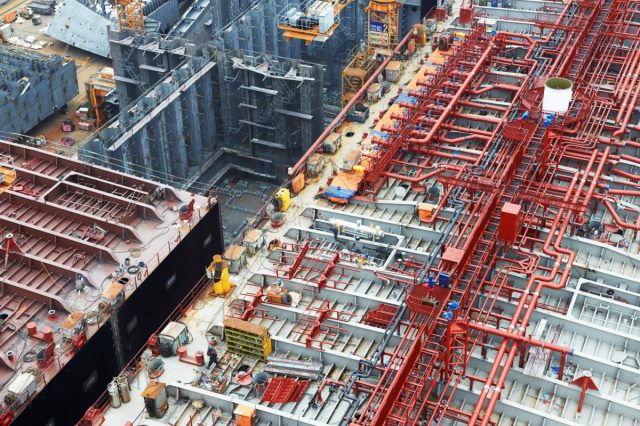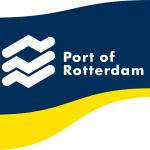The three major Korean shipbuilders—HD Korea Shipbuilding & Offshore Engineering, Samsung Heavy Industries, and Hanwha Ocean—simultaneously announced new ship contracts totaling approximately 2.1051 trillion won (round $1.62 billion). All eight ships ordered by the three companies are high-value-added ships. Notably, the LNG-FSRU ordered by Hanwha Ocean costs over $400 million per ship, which is more than $100 million higher than the average price of general LNG carriers, typically around $265 million.
However, despite these significant contracts, the Korean shipbuilding industry is facing a growing sense of crisis. According to industry sources on Oct. 3, out of the 191 container ships of 7000TEU (1TEU = one 20-foot container) or more ordered this year, China took 177, accounting for 92.7%. This shift has been particularly evident in recent large-scale container ship orders by global shipping companies, which have increasingly favored Chinese shipyards over Korean ones.
Germany’s Hapag-Lloyd, which had also inquired with domestic shipbuilders, recently ordered all 30 of its container ships from Chinese shipyards. Similarly, Switzerland’s MSC and Greece’s Capital Maritime decided to build 10 container ships each in China. Denmark’s Maersk, which has mainly collaborated with Korean shipbuilders, is also reported to have plans to order a total of 22 container ships from Chinese shipyards. This trend is alarming for the Korean shipbuilding industry, which has historically dominated the market for high-value ships like LNG carriers and container ships.
The profitability of container ships has significantly increased due to the overall rise in new ship prices and the adoption of eco-friendly measures to comply with International Maritime Organization (IMO) environmental regulations. The price of ultra-large container ships of 22,000 to 24,000 TEU now reaches $273 million. Container ships are usually produced in series, meaning multiple ships are made from a single design, which enhances production efficiency. The relatively short dock usage time also has positive aspects for shipyards’ dock operations.
Byun Yong-jin, a researcher at iM Securities, stated, “While China’s orders continue, Korea’s container ship orders have halted since July. Although Korean shipyards, which have recorded the highest order backlog since 2008, are not in an urgent situation, it is undeniably a somewhat disappointing result.”
The industry assesses that China is gaining the trust of global shipowners by successfully carrying out projects with low prices and quick delivery times. In fact, it is reported that there is no longer a significant difference in delivery schedules between Korea and China. As global shipping companies actively invest in the container ship market, the sense of crisis in Korean shipbuilding due to China’s dominance is growing.
An industry official commented, “The trend of replacing eco-friendly container ships is expected to continue for the time being,” adding, “There is a need to actively pursue an order strategy focusing on ultra-large container ships, which have high added value, comparable to LNG carriers.”
Meanwhile, the domestic shipbuilding industry is focusing on high-profit projects through a selective order strategy. Despite the challenges, the recent contracts announced by HD Korea Shipbuilding & Offshore Engineering, Samsung Heavy Industries, and Hanwha Ocean demonstrate a continued commitment to securing high-value orders. The LNG-FSRU ordered by Hanwha Ocean, costing over $400 million per ship, exemplifies this focus on high-value-added projects.
Source: Business Korea






